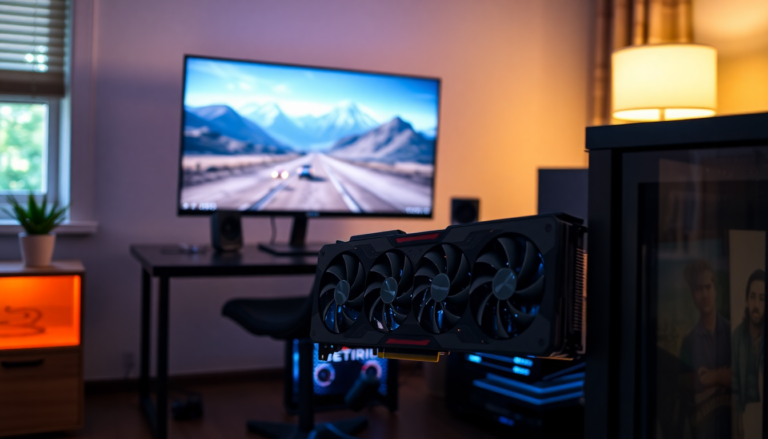Argomenti trattati
What if I told you that the latest GPU from AMD, the RX 9060 XT with its 8GB of memory, is designed specifically for gamers playing at 1080p? It sounds reasonable, right? Yet, in a world where games are pushing hardware to its limits, the real question is: can 8GB truly suffice? This ambiguity has sparked debate among enthusiasts and casual gamers alike, creating a buzzing anticipation ahead of the RX 9060 XT’s release.
Understanding the target market
AMD has taken a bold step with its RX 9060 XT, positioning it as a gaming solution for the majority. Frank Azor, AMD’s Chief Architect of Gaming Solutions, emphasized that this GPU is tailored for the mainstream gamer, primarily those who still game at 1080p. But here’s the kicker—despite the overwhelming evidence of modern gaming demanding more from our hardware, AMD stands firm in its belief that 8GB is enough for most users. They argue that a significant portion of gamers are entrenched in 1080p, with the Steam Hardware Survey corroborating this claim: a staggering 55.27% of users still stick to this resolution.
But let’s pause for a moment. Just because a majority of gamers might not need more than 8GB of VRAM doesn’t automatically make it a wise choice for the future. The gaming landscape evolves rapidly; just think back a few years when 4GB seemed adequate. Now, even titles at 1080p are pushing against the limits of 8GB VRAM, especially when it comes to demanding AAA games. I remember when I upgraded my own rig, and the difference in performance was staggering, yet I often found myself wishing for just a bit more memory during intense gaming sessions.
The performance dilemma
As we delve deeper into the performance expectations of the RX 9060 XT, it becomes clear that it might not be all sunshine and rainbows. Sure, AMD’s marketing paints a rosy picture, but let’s be real: can an 8GB GPU really handle the demands of modern gaming? From personal experience, I’ve seen how even the RTX 3060 with its 12GB of VRAM can outperform the RTX 5060 Ti in certain scenarios, leading many to question whether AMD’s choice is genuinely viable.
The RTX 3070 Ti serves as a perfect example of how a small framebuffer can handicap an otherwise capable GPU. The core powering the RX 5060 Ti may have the raw speed to compete, yet if the memory allocation is insufficient, that potential power is left untapped. The question lingers: will the RX 9060 XT fall into the same trap? AMD’s claim that the RX 9060 XT is designed to cater to esports and casual gaming doesn’t quite assuage the concern that it may not stand the test of time.
Market segmentation and consumer choice
Another intriguing aspect of this launch is AMD’s strategy of market segmentation. By offering multiple memory configurations, they seem to be attempting to cater to various segments of the gaming community. Azor mentioned that if 8GB isn’t sufficient for you, there’s always the 16GB option. But this leads to an important consideration: does such segmentation limit users to the 1080p experience? It’s a paradox worth pondering. Do you really need to step down to an 8GB GPU to enjoy 1080p, or does having the capacity to upgrade to 16GB influence your choice of resolution?
In the case of the RX 9060, its positioning feels somewhat skewed. It’s got the raw power to handle more demanding tasks, but its VRAM might just hold it back. Perhaps a better approach would have been to introduce a dedicated esports card priced around $200-$250, allowing gamers to choose based on their needs without feeling pressured by memory constraints.
The road ahead for AMD
As we look ahead to the RX 9060 XT’s official launch, there’s palpable excitement mixed with skepticism. Keeping the price at MSRP will be a crucial challenge for AMD, especially given the RX 9070 family’s inconsistent performance in this regard. With the gaming community eagerly awaiting the release, it will be fascinating to see how AMD navigates these turbulent waters. The landscape of gaming hardware is ever-evolving, and as many know, the demands of gamers are only going to increase.
Ultimately, while the RX 9060 XT might be aimed at the majority, it begs the question: is it truly enough? As someone who has spent countless hours tweaking settings and pushing hardware to its limits, I can’t help but feel a twinge of caution. Will this GPU be a worthy companion for gamers or merely a stepping stone to something better? Only time will tell.

